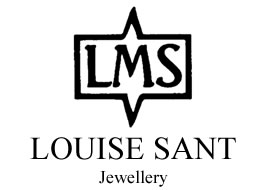Glossary
Vermeil - 24ct hand gold plated on Silver
Silver - sterling silver 925
THE CREATION OF PEARLS - is caused by the protective reaction of an oyster or mussel to the accidental or deliberate introduction of a foreign body into its organism. This reaction creates concentric layers of nacre, which surround the intruder and slowly form the pearl, layer by layer.
Freshwater cultured pearls - are the most common type of pearl, grown in freshwater Sankaku mussels (China) and Ikecho mussel (Japan) rather than oysters, which live in lakes and rivers. They are cultured by tissue nucleation – the mussel is pried open enough for a technician to insert a small piece of tissue inside, this acts as an irritant and begins the production of nacre which starts the formation of a pearl. This is why it is rare to find a round freshwater pearl. This nacre gives the pearl outstanding lustre, are durable, resist chipping, wear and degeneration. Culturing takes 2 – 7 years, with one mussel producing 24 – 32 pearls. Natural colours include tones of white, pink, lavender, mauve, apricot and peach. They are also dyed a variety of colours. Shapes include round, drop, button, baroque, keshi, coin, rice, potato and Biwa. Sizes range from 1mm – 2mm to 15mm in diameter. The mussel shells are returned to the water to provide calcium for future generations.
A Keshi pearl (meaning Poppy), is a natural pearl which occurs within a cultured oyster host, in a cultured pearl farm. When the graft and nucleus fail to attach to each other, the oyster rejects the nucleus and the graft tissue begins secreting nacre layers around itself and so is then composed entirely of nacre (mother of pearl). These pearls are almost always baroque in shape.
Mabe pearls - are normally 11mm to 17mm in size and are cultivated by attaching a mother of pearl half sphere to the shell itself. Nacre is built up onto this half sphere and later cut out of the shell. The original dome shaper is removed , the fragile empty half sphere is cleaned and filled with resin, and a mother of pearl half bead and base is put on to finish.
Prehnite - color varies from light green to yellow. Extensive deposits of gem quality prehnite occur in Australia.
Amazonite - The name is taken from that of the Amazon river, the blue-green color results from small quantities of lead and water in the feldspar.
Howlite - was discovered near Windsor, Nova Scotia in 1868 by Henry How hence it's name.
Labradorite - can display an iridescent optical effect, found in Labrador, Canada.
Aquamarine - "water of the sea" is a blue variety of gemstone-quality beryl, and is found in the United States, Brazil, Colombia, Zambia and Madagascar.
Turquoise - is an opaque, blue-to-green mineral found in Iran, Sinai and United States. Tibet turquoise is more green with inclusions, whilst turquoise from the Blue Mountain in America is super blue.
Garnet - The word garnet comes from the 14th‑century word gernet, meaning 'dark red'.It is derived from the Latin granatus- pomegranate. Garnet species are found in many colors including red, orange, yellow, green, purple, brown, blue, black, pink, and colorless, with reddish shades most common.
Moonstone - Its name is derived from a visual effect, or sheen, caused by light diffraction within a microstructure consisting of a regular succession of feldspar layers.The Romans admired moonstone, as they believed it was born from solidified rays of the moon.
